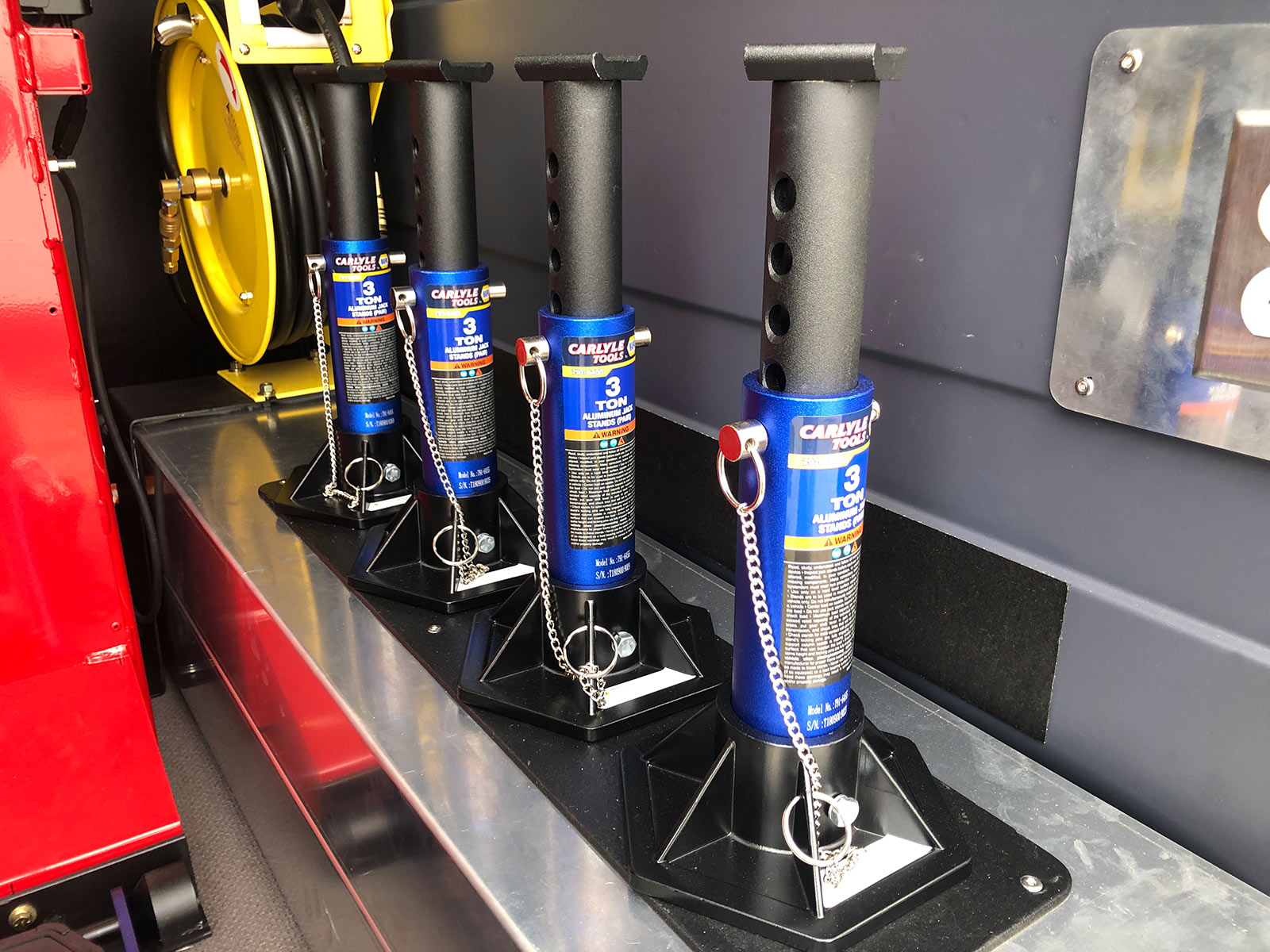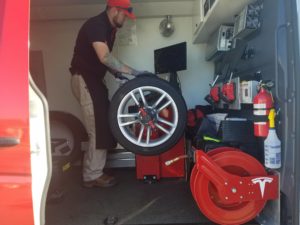Tire Service: Proven Techniques for Optimal Tire Upkeep and Care
From ensuring correct tire stress to regular rotation and placement, there are tried and tested approaches that can considerably expand the life-span of your tires and boost total driving experience. Let's dive right into the globe of tire service and find the tricks to keeping your tires in first-class form for the lengthy haul - Flat Tire Repair Las Vegas.
Importance of Tire Pressure
Correct tire stress is an essential element in making sure optimal automobile performance and safety and security when traveling. Maintaining the suggested tire pressure degrees provided by the supplier offers many advantages. To start with, ample tire stress advertises better fuel efficiency, as under-inflated tires can lead to boosted rolling resistance, creating the engine to work more challenging and consume even more fuel. Secondly, correct tire pressure ensures even walk wear, boosting tire long life and conserving cash in the lengthy run by postponing the need for early substitutes. In addition, correctly inflated tires add to boosted handling and braking capabilities, crucial for secure driving in numerous roadway conditions. Over-inflated tires, on the other hand, can lead to lowered traction and a harsher ride. On the other hand, under-inflated tires are susceptible to getting too hot, which can cause blowouts and mishaps. Routinely inspecting and changing tire stress, specifically soon journeys, is a straightforward yet effective way to boost vehicle performance, expand tire lifespan, and prioritize safety when driving.
Tire Rotation Guidelines
When considering tire rotation guidelines, it is vital to comprehend the value of this maintenance task in optimizing tire life expectancy and keeping optimal car efficiency. Tire rotation involves transforming the setting of each tire on a lorry to ensure even tread wear. Front tires often tend to put on faster than back tires due to guiding forces, making routine turning vital for well balanced wear patterns. The recommended turning pattern differs relying on whether a vehicle is front-wheel, rear-wheel, all-wheel, or 4x4. Usually, tires need to be rotated every 5,000 to 7,500 miles, or as recommended in the vehicle handbook. Overlooking tire turning can lead to uneven wear, impacting handling, grip, and potentially compromising vehicle security. By sticking to proper rotation guidelines, drivers can prolong the life of their tires, improve gas performance, and improve general driving experience. Regular rotation is a simple yet effective maintenance method that adds significantly to tire long life and automobile efficiency.

Benefits of Wheel Placement
Making certain appropriate wheel alignment after tire rotation is important for maintaining balanced wear patterns and taking full advantage of lorry performance. Furthermore, correct wheel placement assists to prolong the life-span of your tires. Misaligned wheels can cause uneven tire wear, leading to early tire substitute and enhanced maintenance expenses.

Tire Tread Deepness Inspect
Executing a routine assessment of tire Check This Out step deepness is important for maintaining risk-free driving conditions and extending the life expectancy of your tires. The walk on your tires plays an essential duty in giving grip, particularly in damp or slippery problems. To inspect your tire walk deepness, you can make use of a walk deepness scale or the cent examination. The advised tread depth is at least 2/32 of an inch. It is time to replace your tires to make certain optimal performance and security on the road if the walk depth is listed below this limit. Irregular tread wear can show concerns with tire positioning, stress, or suspension, highlighting the relevance of routine step deepness checks. Neglecting to check and preserve appropriate step depth can result in decreased grip, longer braking distances, and an enhanced threat of hydroplaning. By integrating tire tread depth look into your routine upkeep schedule, you can drive with confidence recognizing that your tires are in leading problem.
Seasonal Tire Inspection
A comprehensive analysis of tire condition customized to specific climate problems is crucial for keeping ideal performance and safety throughout the year. Seasonal tire assessment is a fundamental facet of tire upkeep that guarantees tires prepare to encounter the challenges postured by different climate condition. To prepare for wintertime, it is important to examine the tire pressure regularly as cold temperature levels can create tire stress to go down. Inspecting tire walk depth is also essential to guarantee ample grip on snow and frozen roadways. Additionally, looking for indicators of wear and tear, such as lumps or cracks, can help prevent prospective tire failures. As the periods adjustment, it is necessary to evaluate tire condition and make any kind of required modifications to guarantee risk-free driving. By performing routine seasonal tire assessments, chauffeurs can prolong tire life expectancy, improve gas effectiveness, and most significantly, ensure a safe driving experience in differing weather - Mobile Tire Replacement Las Vegas.
Verdict
To conclude, maintaining proper tire stress, turning tires routinely, lining up wheels correctly, checking tread deepness, and carrying out seasonal assessments are additional resources vital techniques for optimum tire treatment. By complying with these confirmed approaches, drivers can ensure their tires last longer, execute far better, and add to overall lorry safety. It is necessary to prioritize tire upkeep to prevent crashes, boost gas effectiveness, and extend the life expectancy of tires.
Ample tire pressure advertises much better gas effectiveness, as under-inflated tires can lead to boosted rolling resistance, causing the engine to function more difficult and take in more gas.When considering tire rotation guidelines, it Extra resources is necessary to comprehend the importance of this upkeep task in optimizing tire life-span and maintaining ideal vehicle efficiency. Seasonal tire examination is an essential aspect of tire maintenance that makes certain tires are prepared to deal with the difficulties postured by various weather condition problems. By performing regular seasonal tire assessments, chauffeurs can lengthen tire life expectancy, boost fuel effectiveness, and most importantly, make certain a safe and secure driving experience in varying weather problems.
In conclusion, keeping correct tire stress, turning tires frequently, lining up wheels properly, keeping an eye on walk deepness, and performing seasonal examinations are crucial techniques for ideal tire care.